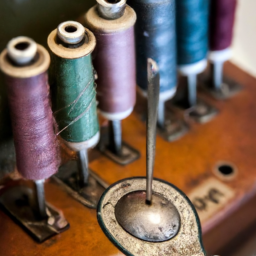
Brief History of Sewing Machine
sewing-machine.jpg” alt=”Sewing Machine” height=”300″>
The sewing machine revolutionized the textile industry and introduced a major leap in the way garments and fabrics were produced. It automated the stitching process, significantly increasing the efficiency and speed of sewing, which was previously done entirely by hand. Let’s delve into the fascinating history of this incredible innovation.
18th Century: Invention of Early Sewing Machines
The concept of mechanical stitching machines dates back to the 18th century. Several inventors from different parts of the world contributed to the development of early sewing machines. In 1790, Thomas Saint, an Englishman, created the first known design for a machine with a hand crank and an awl to pierce materials.
19th Century: Industrial Revolution and Patent Wars
The 19th century witnessed significant advancements in sewing machine technology. In 1829, French tailor Barthélemy Thimonnier was granted the first patent for a practical sewing machine, which used a hooked needle and a continuous thread. However, due to resistance from French tailors who feared job loss, his factory was burned down, and progress in sewing machines stalled.
It was not until 1846 that Elias Howe, an American inventor, patented a sewing machine with the first automatic thread-feed mechanism and a lockstitch design. Howe’s invention became the basis for most modern sewing machines and marked the start of a patent war among inventors competing to improve the machine’s functionality.
20th Century: Electric Sewing Machines
The early 20th century saw crucial improvements in sewing machine technology, mainly the transition from manually operated to electric machines. During this time, companies like Singer, Pfaff, and Brother played a significant role in the popularization and mass production of sewing machines for household use.
Electric sewing machines freed users from manually operating a foot pedal, making sewing more accessible and efficient. The introduction of various features like zigzag stitching, buttonholers, and embroidery attachments expanded the creative possibilities for home sewers and professionals alike.
Modern Sewing Machines: Computerization and Beyond
With the advent of computer technology, sewing machines have become even more sophisticated. Computerized machines offer programmable stitch patterns, touch screens, and integrated advanced functions like automatic thread cutting and tension adjustment.
Today’s sewing machines cater to a broad range of sewing needs, from simple alterations to intricate embroidery and quilting. They have become essential tools for hobbyists, fashion designers, and industries alike, empowering creativity in countless ways.
In conclusion, the sewing machine has come a long way since its humble beginnings, transforming the world of textiles and revolutionizing the garment industry. With continuous innovations, it remains an indispensable tool for those who appreciate the art and craft of sewing.
Sources:




